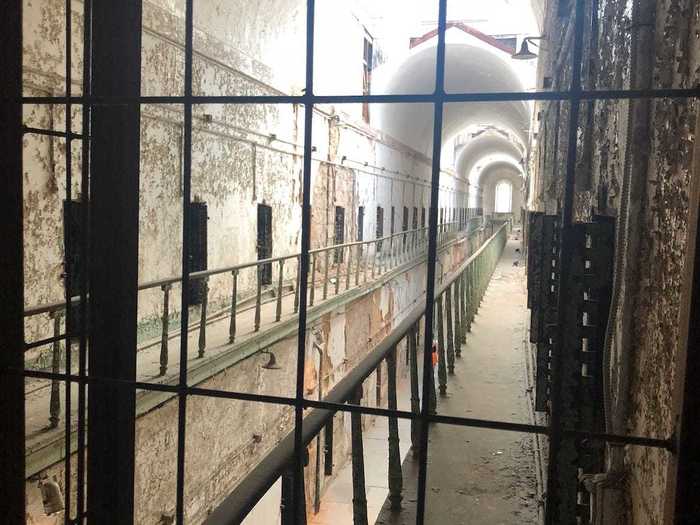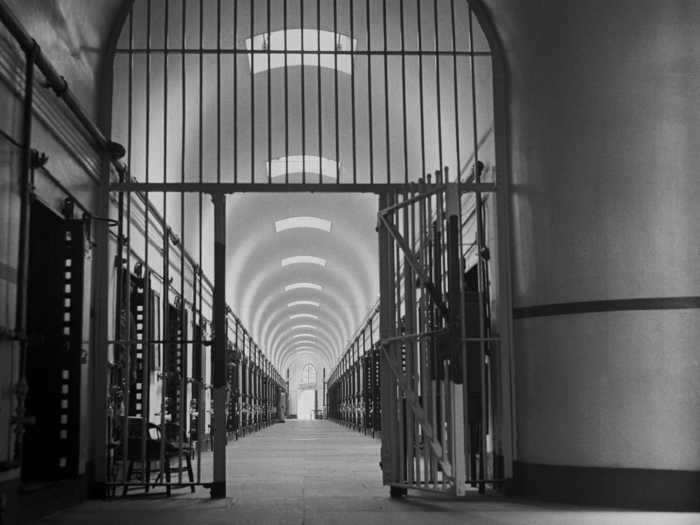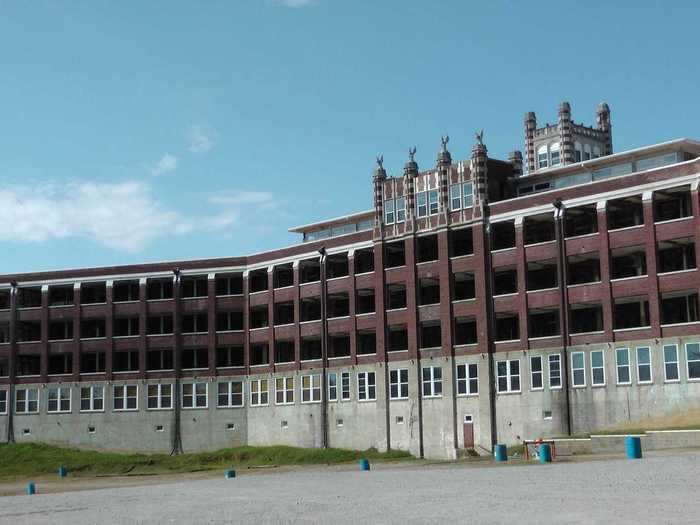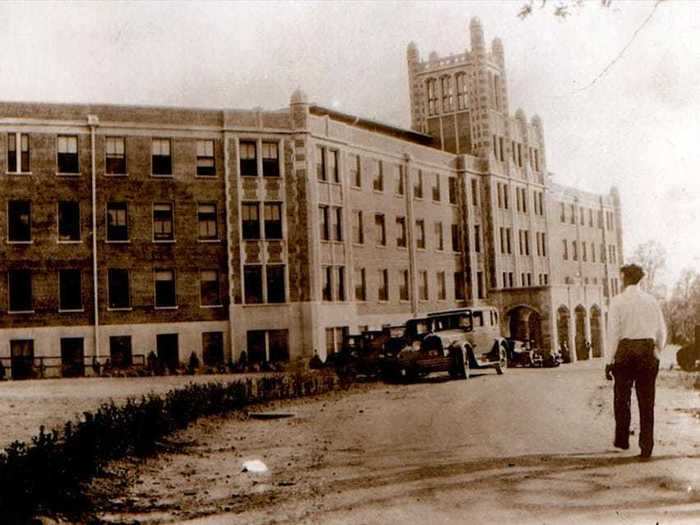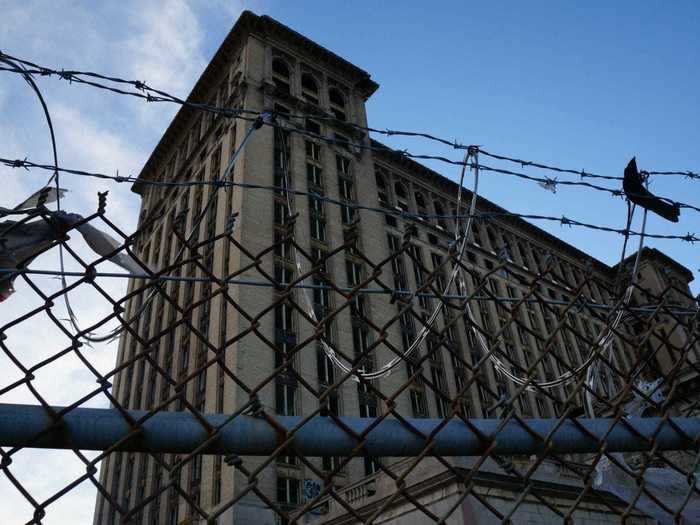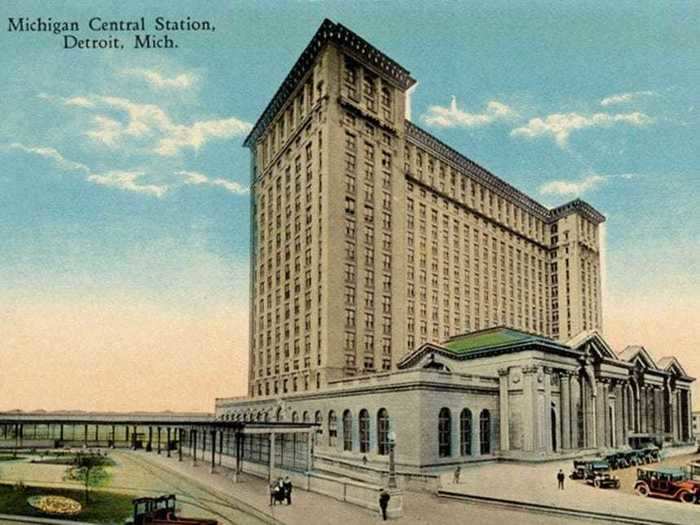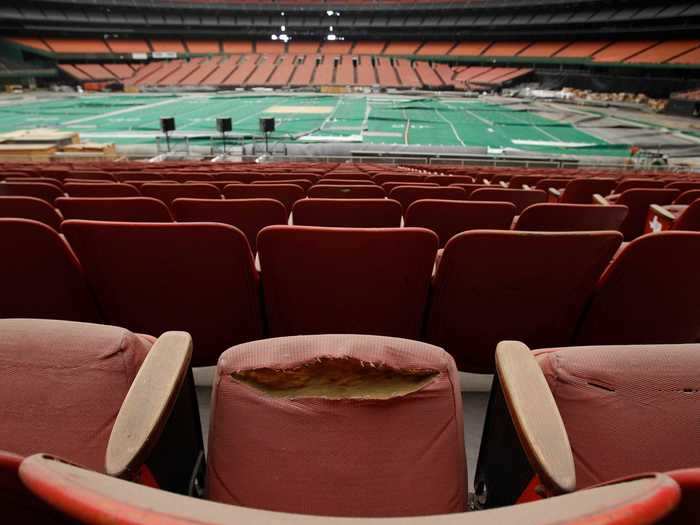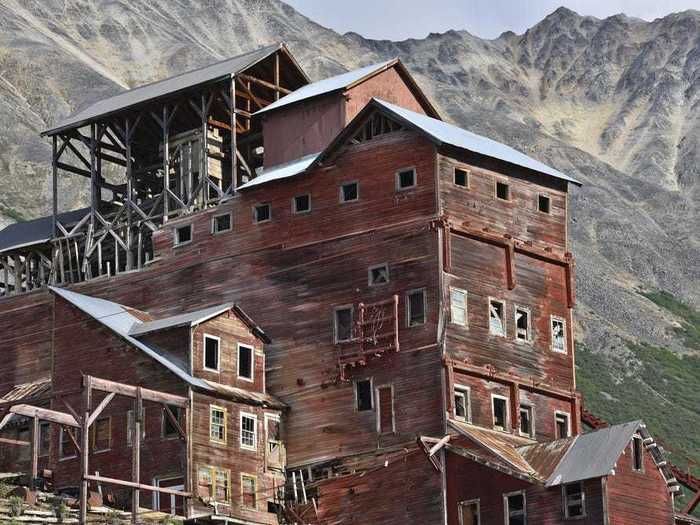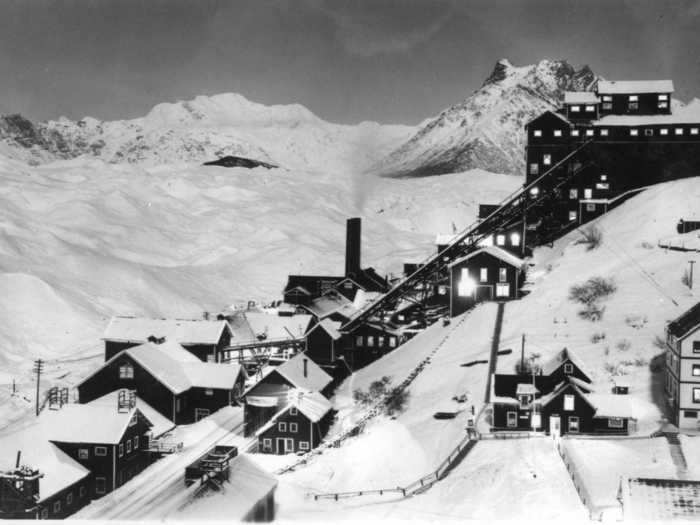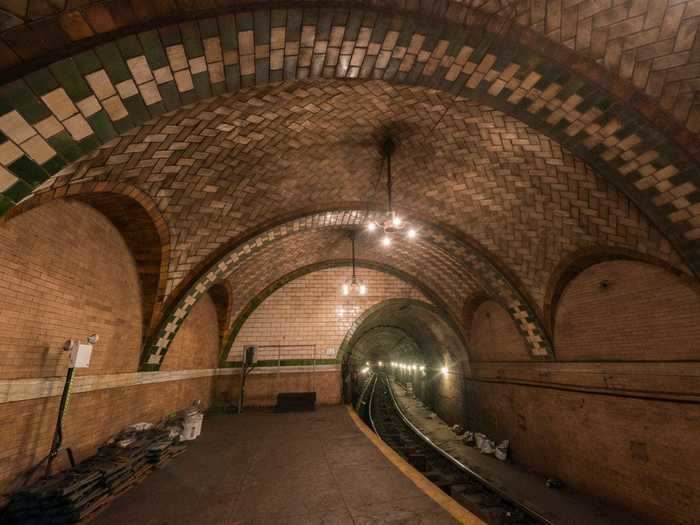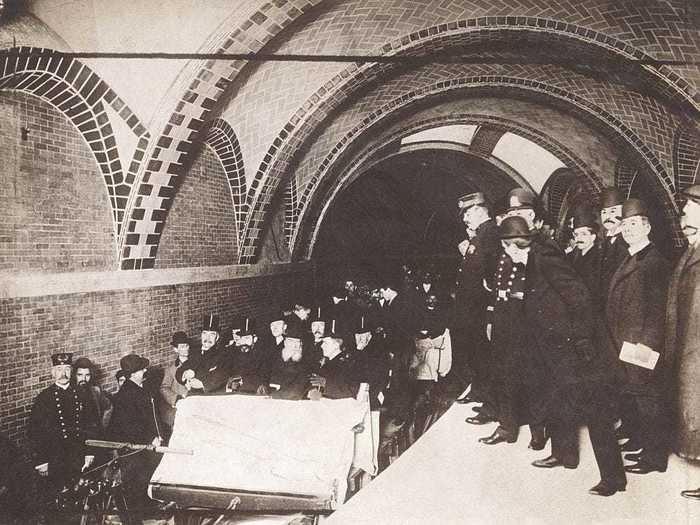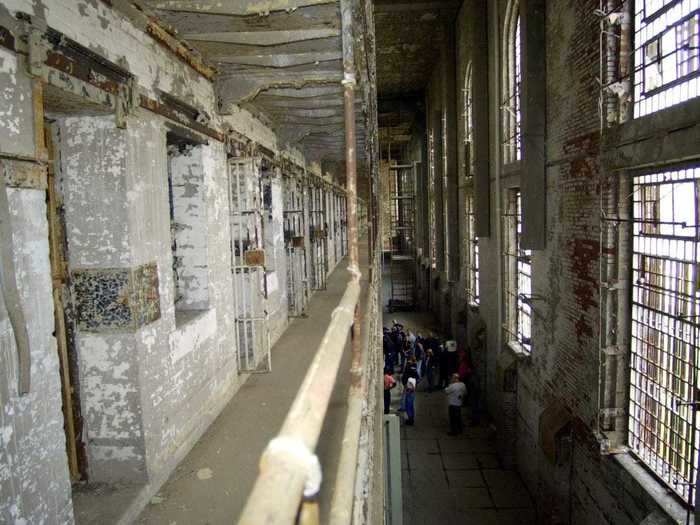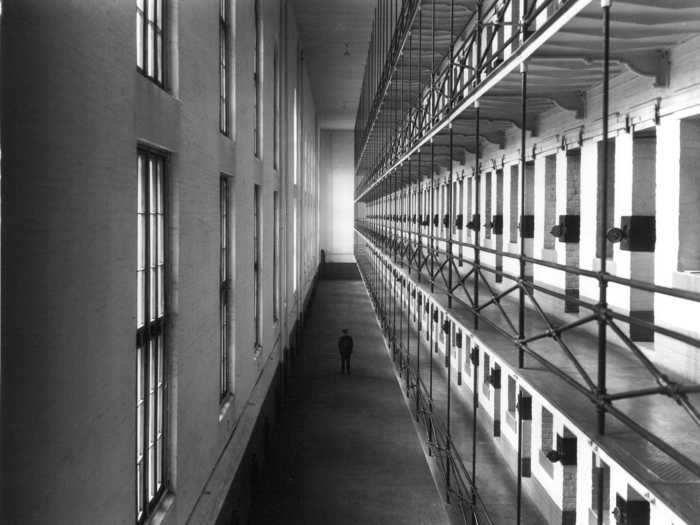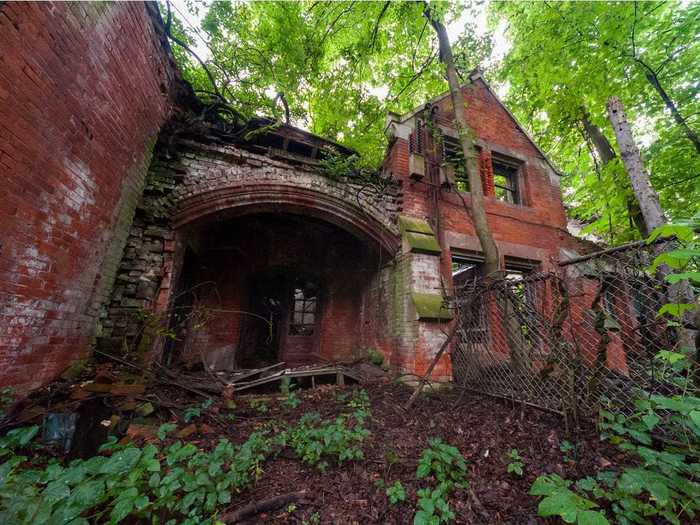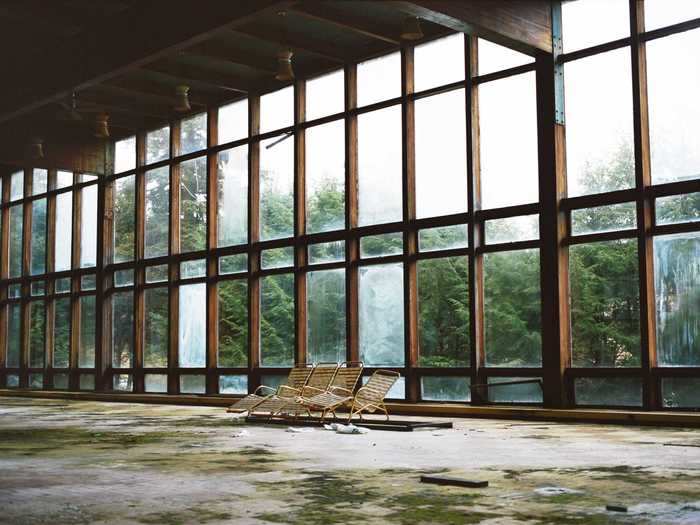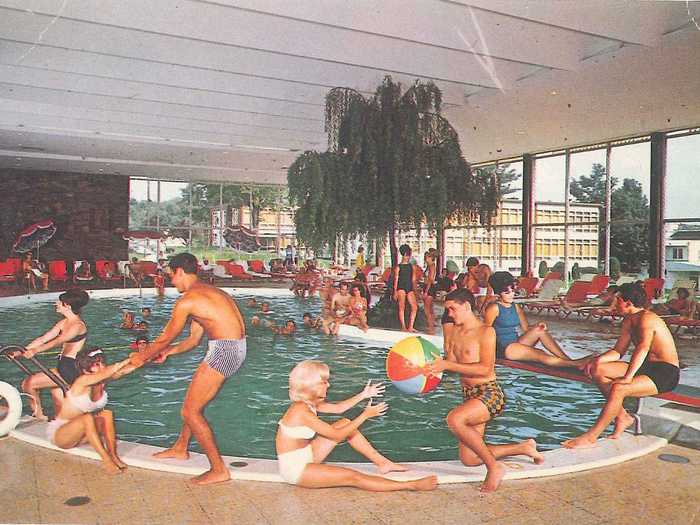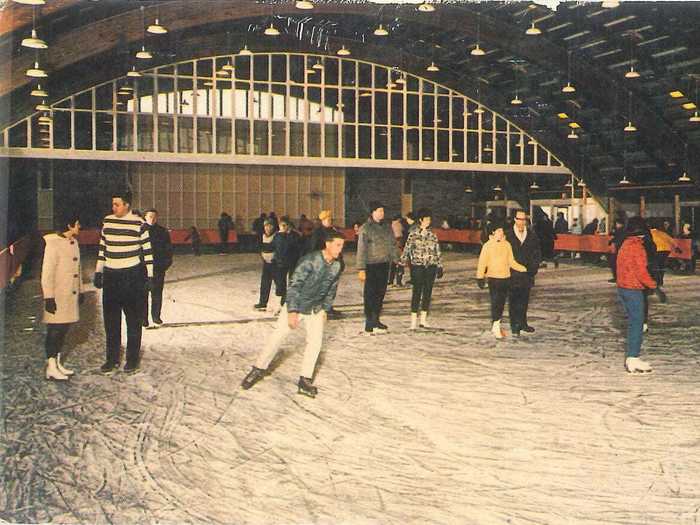Grossinger's Resort in the Catskills, then and now.
Courtesy of Marisa Scheinfeld- "Borscht Belt" resorts in the Catskills went out of style and have sat abandoned for decades.
- Houston's Astrodome used to host sports games and concerts, but is now empty except for when it's used for shelter during natural disasters.
- The Ohio State Reformatory in Mansfield, Ohio, is now a museum and features a tour led by a former prisoner.
- Visit Insider's homepage for more stories.
From once-glamorous summer resorts to eerie sanatoriums, abandoned buildings (and even whole cities) across the US remain shells of their former selves. But what were these eerily empty structures like in their prime?
Here's what 10 abandoned places looked like before they were deserted and how they've since decayed.
Read the original article on
Insider
By 1971, it was closed and totally abandoned.
Today, it's a National Historic Landmark and museum.
Eastern State Penitentiary opened in 1829 in Philadelphia, Pennsylvania.
Eastern State Penitentiary opened in 1829. The prison's philosophy was radical at the time — inmates were kept in strict isolation that was supposed to encourage penitence, hence the name. Famous inmates included Al Capone and "Slick Willie" Sutton.
Prisoners' punishments at the penitentiary were torturous: water baths in winter until ice formed on their skin, an "iron gag" where a prisoner's bound hands were strapped to an iron collar in their mouth which caused the tongue to bleed with any movement, and a "mad chair" where they were tied so tightly that their limbs had to be amputated.
It closed in 1961, and many visitors think it's haunted.
Waverly Hills Sanatorium in Kentucky was built in 1910 as a sanatorium for tuberculosis patients.
The last train left the station in 1988.
Michigan Central Station became a site of vandalism and theft until the city built a barbed wire fence in 1995. The station was set to be demolished in 2009, but the historic building was saved. It remains empty, but the Detroit city officials hope to refurbish it one day.
Michigan Central Station opened in 1913 and was the tallest railroad station in the world at the time.
These days, it's used as a shelter during natural disasters.
The Houston Astros baseball team and the Hoston Oilers football team moved on to new stadiums, and the last event there took place in 2002.
When the Houston Astrodome opened in 1965, it was the first domed multi-purpose stadium in the US.
The stadium hosted sports games, conventions, and concerts with a capacity of 70,000 people. Some called it the "Eighth Wonder of the World."
The mines closed in 1938 when the supply of high-grade ore ran out and has been empty ever since.
Nearly $200 million worth of copper was processed at Kennecott Mines in Alaska between 1911 and 1938.
The abandoned City Hall subway station is only accessible via a special tour.
The station closed in 1945, but the the New York Transit Museum offers tours to members.
New York City's first subway station, City Hall, opened in 1904.
It closed in 1990 and is now a museum.
The Ohio State Reformatory opened in 1896.
Today, most of its structures are on the verge of collapse.
The New York City Department of Parks and Recreation maintains the island as a bird sanctuary, and access to its crumbling remains of a morgue, boiler room, and dormitories is restricted.
From the 1880s to 1943, people with contagious diseases were quarantined on North Brother Island near New York City.
"Typhoid Mary" Mallon, an early 20th century cook who infected dozens with typhoid fever, was one of the island's most infamous inhabitants. After World War II, North Brother Island was used to house veterans and later as a camp for troubled teens.
It closed in 1986 and its once-glamorous swimming pools and gazebos are being overtaken by the surrounding woods.
The resort's owner died in 1972 and the property was sold to a hotel developer, but nothing ever came of it.
Grossinger's Resort, another Borscht Belt hotspot, was once known as the "Waldorf in the Catskills."
The ice skating rink at the Pines Hotel has seen better days.
In the 1960s, cheap air travel allowed a new generation to visit more exotic and warmer destinations, and the Borscht Belt was no longer the place to be.
The Pines Hotel in South Fallsburg, New York, was part of the "Borscht Belt," a collection of resorts popular with New York City Jews in the 1950s and 1960s.

